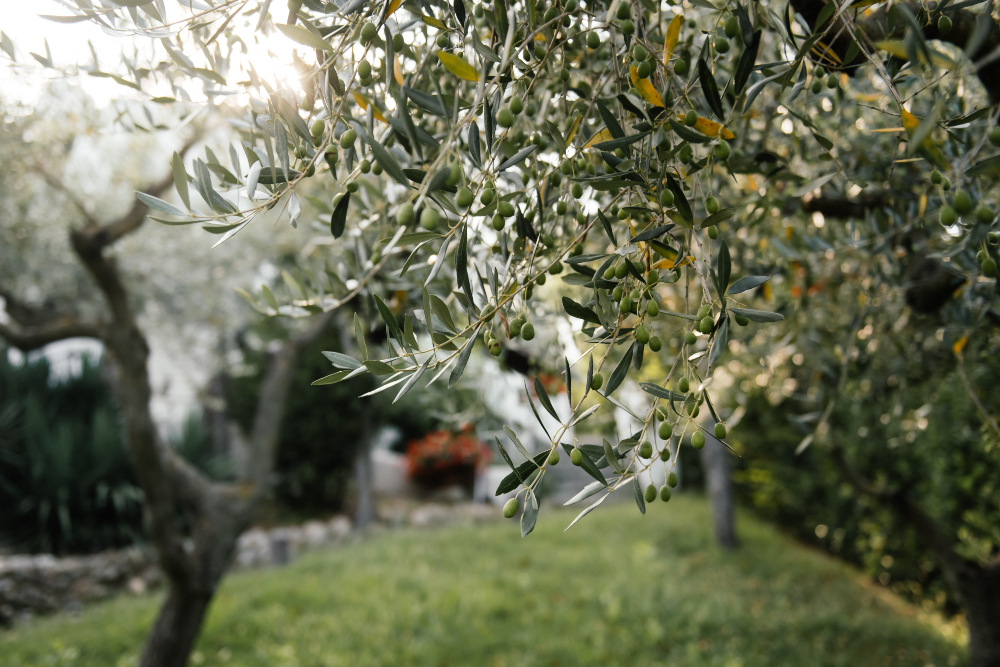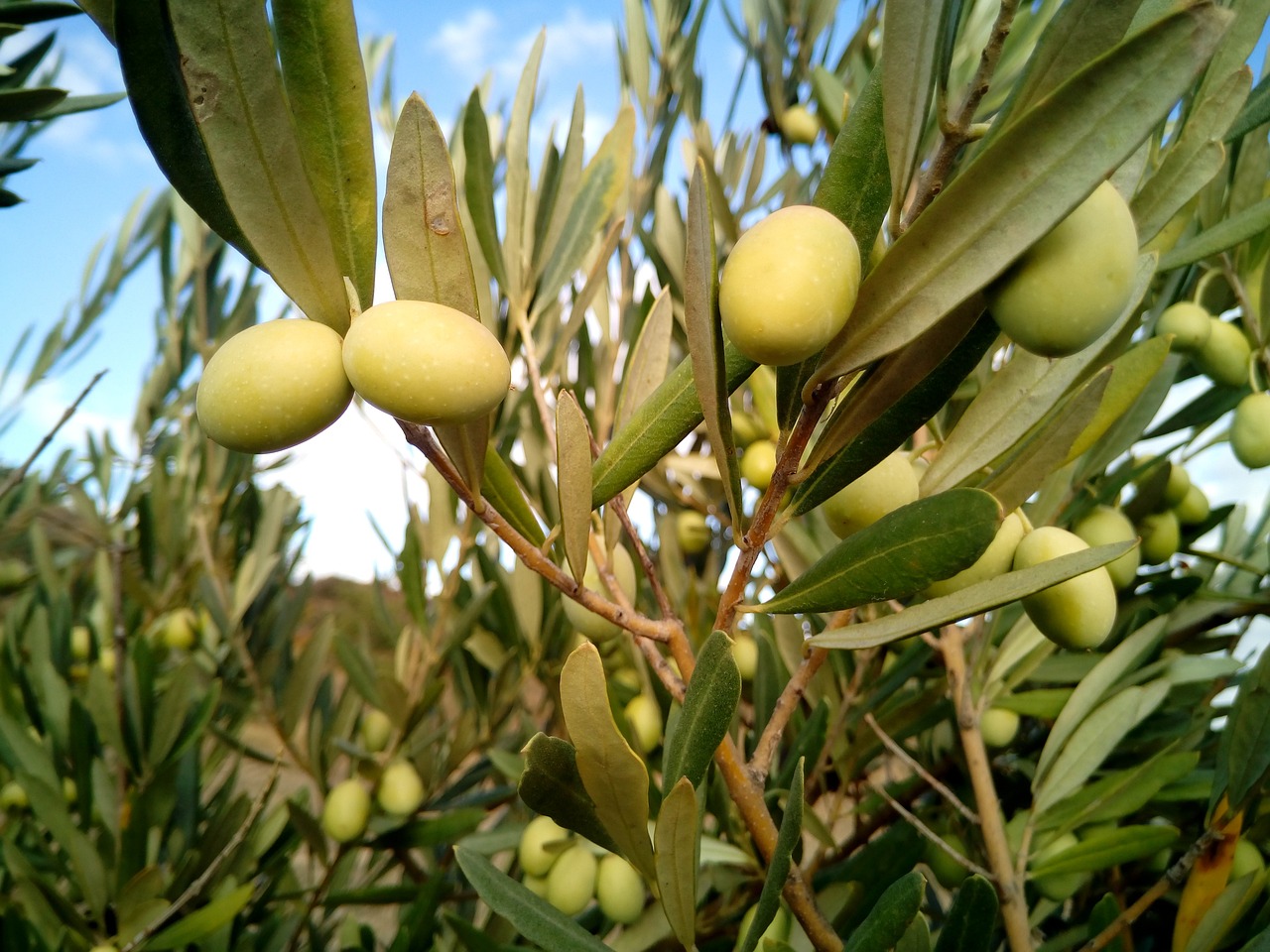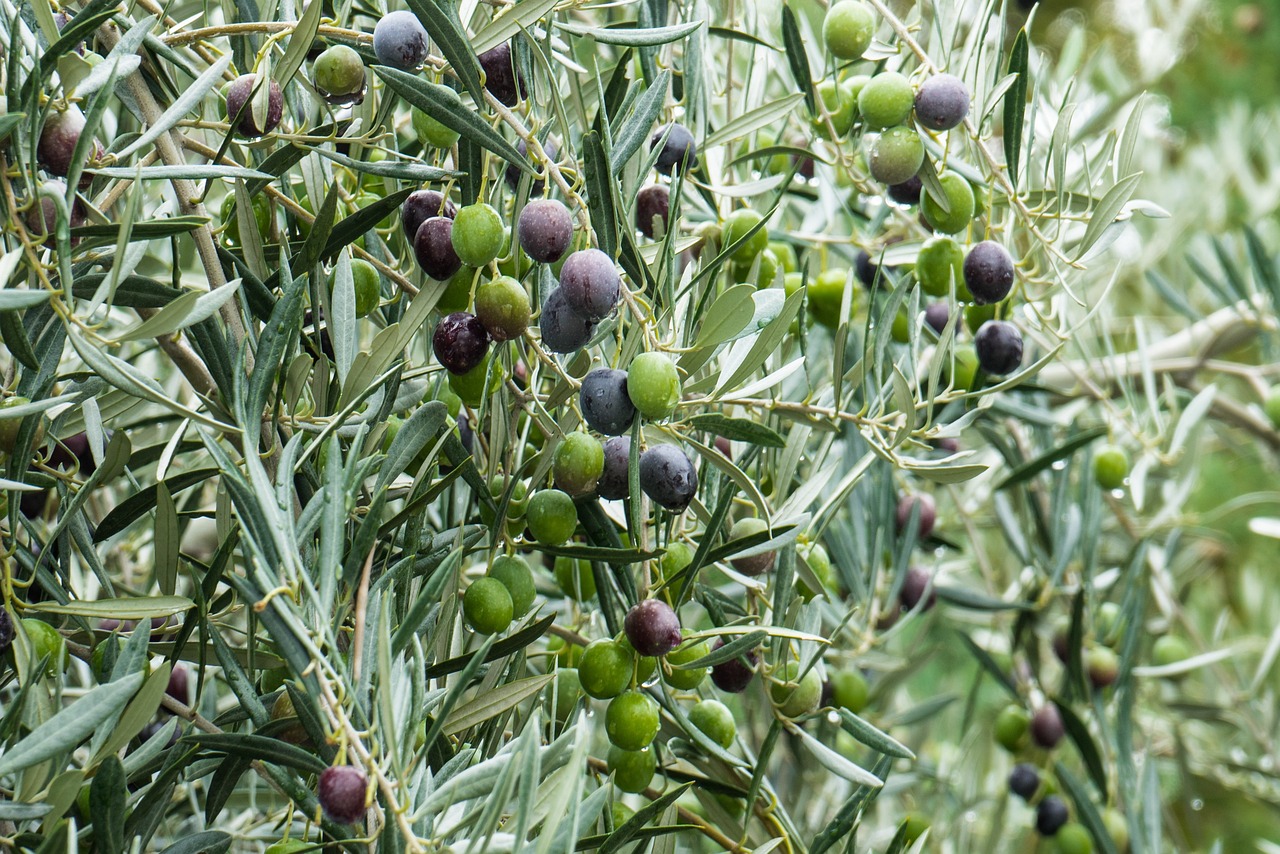How To Grow An Olive Tree

Olive trees are one of the world’s oldest cultivated trees. In fact, they were grown before the written language was even invented! They are tough, drought-hardy, versatile, easy to grow and add a lovely aesthetic to any garden with their beautiful silver foliage.
However, olive trees are probably most famous for the plump, delicious fruit they produce, which can be picked, pickled and savoured. In fact, we think they are one of the best Australian fruit trees. Here is our handy guide to the types of olive trees available in Australia, what conditions they prefer, and how to grow and prune an olive tree.
Olive tree overview
- Scientific name – olive (Olea europana cvrs)
- Plant type – evergreen fruiting tree
- Size – naturally up to 15 metres, but usually less than half of this.
- Foliage – 50mm to 100 mm long by 20mm to 30mm wide with a stretched oval shape, tapering equally at both ends with a distinct point on the tip. Leaves can vary from dark green to silvery grey, depending on the variety.
- Climate – sub-tropical, warm temperate, semi-arid and cold temperate in protected and mild areas.
- Flowering – flowers are tiny, less than eight millimetres across, borne on a long stem of multiple flowers. They are creamy-coloured and quite fragrant.
- Fruiting – fruit ripens in autumn to winter depending on the variety and region. Most start green and then ripen to a purplish-black, although some varieties are green when ripe. They are roundish-oval in shape and generally 20mm to 30mm long, although the size varies between cultivars.
Appearance and characteristics of an olive tree
Olive trees generally have a single main trunk with multiple branches spreading to form the crown. The shape of an olive tree is fan or vase-like, and a mature tree has a graceful, almost weeping appearance. The foliage is a beautiful addition to any landscape as it typically has an attractive silvery appearance. This is actually due to the underside of the leaves, as the tops are generally a dark green.
Olive trees grow quite quickly when young, especially if provided with adequate moisture and regular feeding. As they age, however, their growth slows. Regardless, they can be very long-living — trees hundreds of years old will still produce fruit, and they can live as long as 1000 years!
They will tolerate an enormous range of climatic conditions and given the right situation, can fruit abundantly. However, some people are happy to grow them as purely ornamental trees as they adapt well to pruning.
Plants with silver foliage are often some of the hardiest and most dry tolerant. The silver-grey colouring, especially under the leaves, helps plants avoid excessive moisture loss in hot conditions and prevents the leaves from being scorched by glare reflected from water or bare soil. This makes many species of olive tree ideal for scenarios involving heat and reflected light, such as around swimming pools.
An olive tree’s best features
- An olive tree has many beneficial features, including:
- Producing fruit that can be preserved by pickling or salting and also pressed to make olive oil.
- Very hardy and performs well in planters and large pots.
- Aesthetically pleasing – they add a Mediterranean look.
- Excellent feature trees providing good summer shade.
- Fantastic in low-maintenance or sustainable gardens.
Origins of olive trees
The olive tree is native to Asia Minor and spread from Iran, Syria and Palestine to the rest of the Mediterranean basin around 6000 years ago. By 3000 BC, olives were being grown on the Greek island of Crete, which may be the source of the wealth of the Minoan civilisation.
The Phoenicians spread the olive to the Mediterranean shores of Africa and Southern Europe, and olives have been found in Egyptian tombs from 2000 BC. The olive culture was then spread to the early Greeks and then the Romans.
Olive farming in Australia
Olive farming in Australia dates back to the early 1800s, most probably beginning in New South Wales. Historians believe that many of the ships arriving on our shores carried olive trees which were also planted in Victoria and South Australia.
In the 1830s, South Australia began to lead the local olive industry by importing trees from Sicily, France and Rio de Janeiro. From early 1860, Western Australia was also building a local olive oil industry.
Olive groves continued to expand until the 1920s when suburban housing took over the land and they spread over nearby borders. Irrigated trees and processing equipment was established in 1956 in Robinvale, Victoria. When production costs and Mediterranean labor costs plummeted in the 1970s, many trees were uprooted. However, with the recognition of its health benefits, Australian-grown and processed olives and oil are now immensely popular and play a key role in many Australian’s diets.
Five most popular Australian olive trees
There are five common types of olive trees in Australia, and their fruit can be pickled or pressed into oil.
- Kalamata. Produce juicy, sweet olives that are harvested once they turn black. Recognisable by their unique torpedo shape, they are ideal for cooking or eating on their own. Growing to a height of around eight metres, this variety is self-fertile, but fruiting may improve if it is cross-pollinated with Frantoio.
- Frantoio. Growing to a height of eight metres, frantoio olives are usually used to make a fruity, aromatic oil. When pickled, these olives have a pleasant nutty flavour. Frantoio is a self-fertile variety that consistently produces heavy yields.
- Manzanillo. This is one of Spain’s finest varieties, and it is used to produce oil that is exported internationally. It is considered the world’s best dual-purpose cultivar, as its olives can be pickled when green or black. Growing to a height of around five metres, this variety is self-fertile but may benefit from cross-pollination with Frantoio and Arbequina.
- Picual. Picual is a medium-sized tree originating from Spain. It bears fruit early in the season that is best picked when ripe. Growing to around six metres, this variety is self-fertile but may benefit from cross-pollination with Arbequina.
- Arbequina. Bears olives that are traditionally used for oil production, but they can also be pickled green or black. It grows to a height of five metres, is self-fertile and fruits early in the season.
How to grow an olive tree
Propagation
Olive trees can be grown from seed but will revert back to the small-fruited wild variety. The easiest way to propagate olives is from a cutting, including from:
- Hardwood. Hardwood cuttings should be taken in winter from two-year-old shoots, dipped in striking hormone and placed in propagating mix, keeping the mixture moist but not wet.
- Semi-hardwood. Semi-hardwood tip cuttings can be taken in spring and summer, dipped in striking hormone, placed in propagating mix and kept moist through misting.
- Trunk sucker shoots (from above the graft). Will root readily if removed and placed into propagating mix and kept moist.
Climate
Olive trees prefer a Mediterranean-type climate — long, hot, dry summers, which ripen the fruit, and a degree of cold and moisture across winter, including “winter chill hours” below 8ºC. The number of hours varies across varieties, so it’s essential that if you are growing yours for fruit, you select the right variety for your climate. Because olives are very intolerant of high humidity, they are also vulnerable to attack from a range of diseases and pests.
Sunlight
Olive trees grow best in full sun. As shade gets heavier, trees will become less dense, and fruit will reduce incrementally.
Aspect
They are very tolerant of windy positions, although young trees may require staking until they are established. Olive trees also tolerate coastal conditions, provided they don’t receive a lot of direct salt spray. In cooler zones, consider placing them against a wall that receives direct sunlight, such as in a courtyard which will create a heat “trap”.
Soil
An olive tree will tolerate a very wide range of soil types but it will do best in deep, well-drained sandy or gravelly soil with moderate organic matter. It will not tolerate wet, cold soil.
Water
Olive trees are very dry-tolerant once established and happy with natural rainfall of between 500 and 750mm, provided that most of this falls in winter. The best watering pattern is moderate amounts during winter, small amounts in spring during flower and fruit set, and then a dry summer as the fruit develops.
Feeding
An olive tree can grow without additional nutrients but benefits from an application of controlled-release fertiliser annually. For best results, supplement occasionally with liquid seaweed or an organically-fortified liquid product.
Diseases and pests
Healthy trees growing in the right climate will be virtually problem-free. However, some of the issues you may encounter include:
- Tiny insects called thrips which attack leaves. The result is generally identifiable by the curling of leaves or silvering of the top surfaces.
- Fungal and root rot problems can occur in situations of water logging.
- Birds can strip a tree of all fruit very quickly.
Potted olive tree
While a fully grown olive tree can reach more than six metres in height, young olive trees will happily thrive in a pot as an indoor olive tree. In fact, we think they are one of the best trees for pots in Australia.
You will need to select a large enough container, fill it with nutrient-rich potting mix, and ensure the plant receives at least six hours of direct sunlight per day. For its ongoing care, top up the pot with fresh soil every couple of years and water the tree lightly but regularly.
When and how to prune an olive tree
Pruning is best done early and often as olives may only fruit biennially if not regularly pruned. Here are the basic steps:
- Prune out vigorous suckers that may occur lower down the trunk, especially if they arise below the graft.
- Remove the tips of young shoots to encourage bushiness and contain size.
- Olives fruit on one-year-old wood, so this regular pruning encourages the required growth.
- Keep the framework of the tree open to reduce humidity.
- Older or damaged trees can be heavily pruned and will reshoot readily.
- If trees have outgrown their location, they can be heavily pruned, too.
References
- 2020, How to grow olives, Better Homes and Gardens
- 2022, How to plant, grow and prune an olive tree, Bunnings
- 2015, The History of Olive Farming in Australia, Treetops Plantation








